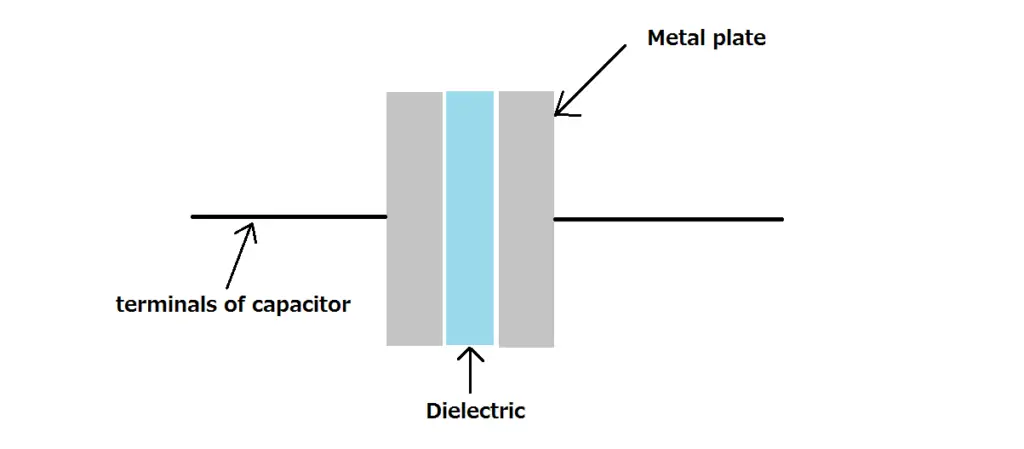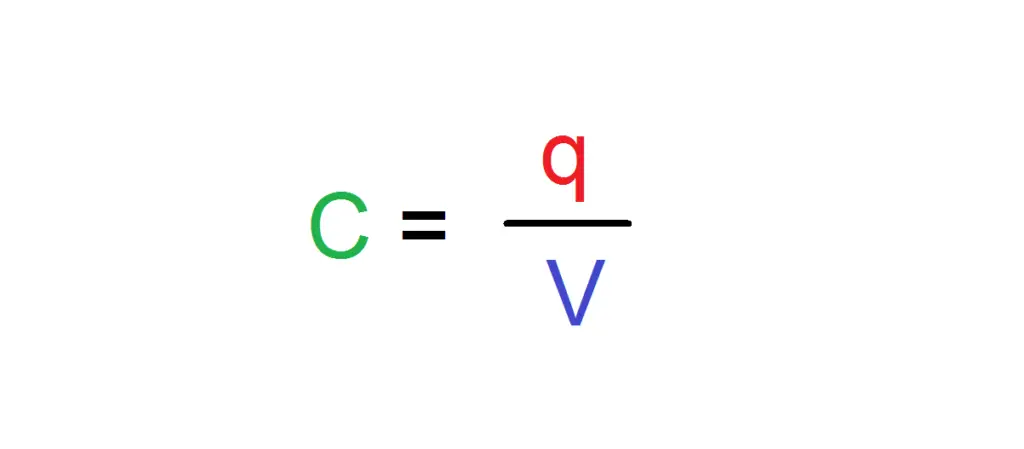In the electronic world, there are many components available each having its own unique purpose in a circuit.
Of the extensive list of components, the Capacitor is one of the most utilised.
It is an essential part of many circuits, and I would be surprised if I were to stumble upon one that does not contain a capacitor.
The capacitor is very versatile and has many different applications which include Power Conditioning, Power factor correction, Signal coupling, Decoupling and much more.
Another common application of a capacitor is Energy storage.
But, does a capacitor store energy in the form of a magnetic field?
No, a capacitor does not store energy in the form of a magnetic field. Energy storage in a capacitor is in the form of an Electric Field which is contained between the two conducting plates within the housing of the capacitor.
How a capacitor stores energy in the form of an electric field
So, we now know that energy in a capacitor is not stored in the form of a magnetic field, but rather an electric one.
Let’s dive deeper into how a capacitor is constructed and how it stores its energy.
Capacitors come in a variety of shapes, sizes, material used, etc. But the basic construction and operation from one capacitor to the next stays the same.
It typically contains two parallel conducting plates which are separated by a dielectric.

When power is applied to the capacitor, an electric charge is generated between the two plates. This process causes one plate to be positive and the other negative.
Fundamentals of how electric fields are formed
But, why does an electric field form?
To understand why, let’s take a closer look at the Electric Field.
If we had the ability to view an electric field, you would see that it is a physical field that surrounds an electrically charged particle ( both positive and negative)
Just like a magnet creates a Magnetic Field that cannot be seen, an electrically charged particle produces an Electric Field that cannot be seen.
Also, just like magnets, charges of the same polarity repel each other, while opposite charges attract each other.

In the diagram you can see that electric fields radiate away from positive charges, and towards negative charges.
The electric field inside a capacitor
The simplest form of a capacitor is two metal plates separated by a dielectric as we saw earlier.
When a voltage is applied to a capacitor, an electron is added to one plate making it negatively charged.
This electron has an electric field which repels other electrons. It travels through the space between the plates and bumps the electrons off the other plate making it positively charged.
As the process increases, the amount of electrons added to the first plate increases thus increasing its negative charge, which in turn increases the induced positive charge on the second plate.
Eventually, the amount of negative charge on the first plate is going to reach a maximum value which will prevent the battery from adding more electrons.
The capacitor is said to be fully charged at this point, and its electric field will be at its strongest.
Since electric fields radiate away from positive charges and towards negative ones, an electric field will point across the gap between the two metal plates in straight lines.

How much energy is stored within the electric field of a capacitor?
When a capacitor is connected to a power source (like a battery), it stores the received energy in the form of the electric field which we have just discussed.
The amount of energy stored in a capacitor’s electric field comes down to a singular formula and a couple of variables.
Without going into too much detail of its derivation, below is the formula used to calculate the amount of energy stored within a capacitor’s electric field.

W represents energy, C is capacitance and V is voltage.
Let’s take a look at how capacitance affects the magnitude of a capacitor’s electric field.
Capacitance is a crucial part of a capacitor which determines its ability to store electrical energy in an electric field.
As you just saw before, when a voltage is applied to a capacitor, a fixed amount of positive (q+) and negative (q-) charges build up on either plate of the capacitor.
Using the value of voltage (V) and total amount of charge (q), we can calculate the total capacitance (C).

Different types of capacitor
In this article we have been discussing the most basic type of capacitor, known as a parallel-plate capacitor whose dielectric is just a vacuum (air).
But, there are many different types of capacitor available. Below is a list of the most common;
- Ceramic
- Film and Paper
- Aluminum, Tantalum and Niobium
- Polymer
- Silver mica, glass
Capacitors are usually named after the material used for their dielectric.
Each of these capacitors will vary in either size, dielectric, material used for anode (positive plate), and construction of cathode (negative plate).
Things like the area of the plates, distance between the plates, type of dielectric used, dielectric constant, etc, all play a role in determining a capacitor’s total capacitance.
Changing the capacitance will directly impact the amount of energy that will be stored in the capacitor’s electric field.
From the equation above we can deduce that the higher the capacitance, the higher the energy storage capability for that capacitor and vice versa.
Is the energy stored in the capacitor permanent?
No, the energy stored in a capacitor’s electric field is not permanent.
When the capacitor is connected to a battery, charges build up on both plates until it reaches a maximum value.
This does not happen instantaneously but takes a certain amount of time which is known as the Rate of Charge.
Now, if we disconnect the voltage source that charged the capacitor, the capacitor is going to discharge the charge (or energy).
This does not happen instantaneously either, but over time.
This is known as Discharge rate, which defines the time it takes for a capacitor to release all its charge and voltage.
So, the energy in a capacitor’s electric field stays at a constant level as long as there is a voltage present. When voltage is removed, the energy will drain over time.
What component stores energy in the form of a magnetic field?
Ok, so a capacitor stores energy in the form of an electric field.
But, is there a component that stores energy in the form of a magnetic field?
Yes, an Inductor is a passive electrical component that stores its energy in the form of a magnetic field when subject to a current.
They are also referred to as a Coil, Choke, or Reactor.





